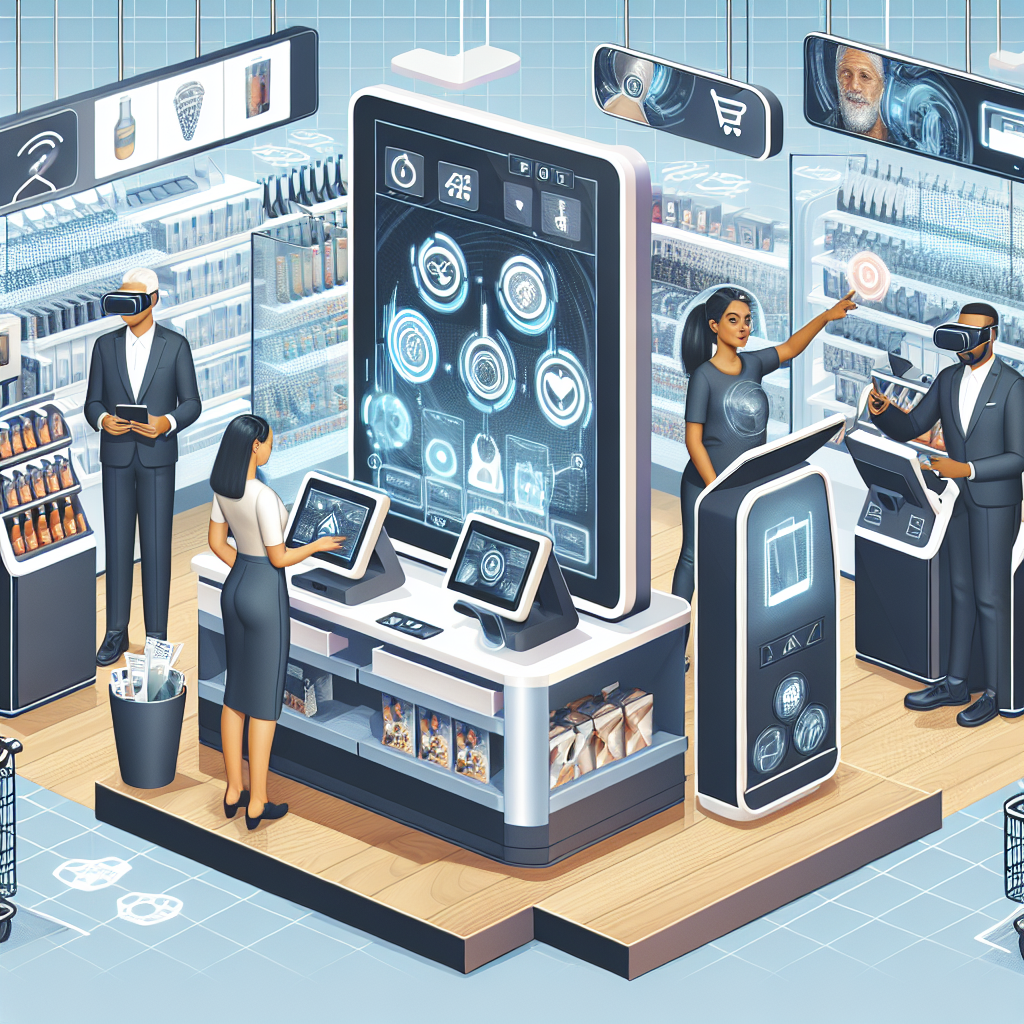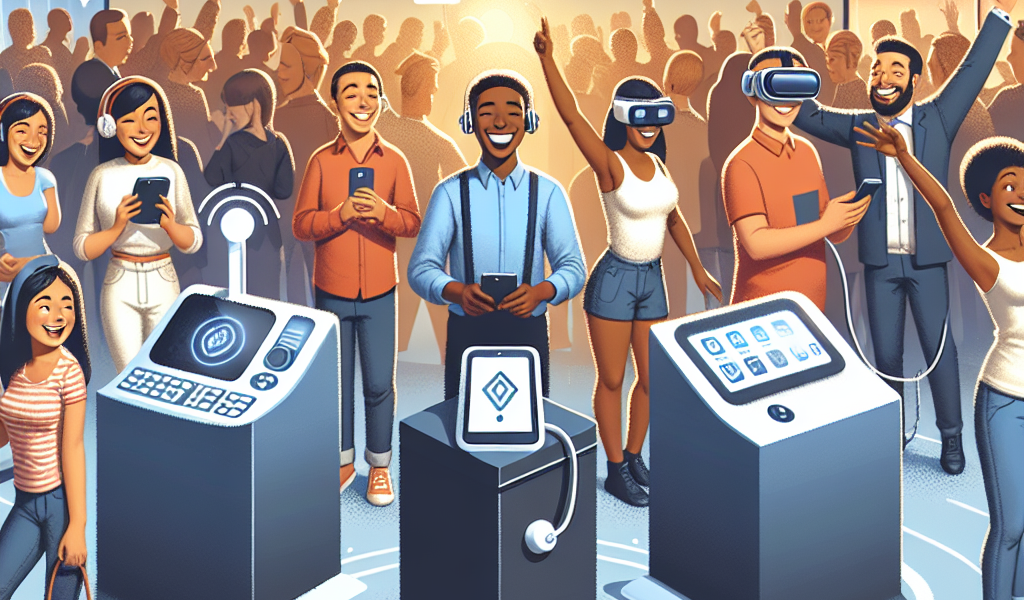-
Table of Contents
“Empowering Connections: Revolutionizing Customer Experience Through Technology”
Introduction

The Role of Technology in Enhancing Customer Experience
In today’s rapidly evolving digital landscape, technology plays a pivotal role in shaping and enhancing customer experience across various industries. From personalized interactions and seamless transactions to real-time support and data-driven insights, technological advancements have revolutionized the way businesses engage with their customers. By leveraging tools such as artificial intelligence, machine learning, and advanced analytics, companies can anticipate customer needs, deliver tailored solutions, and foster deeper connections. This integration of technology not only streamlines operations but also elevates the overall customer journey, driving satisfaction, loyalty, and long-term success. As consumer expectations continue to rise, the strategic implementation of technology becomes increasingly essential for businesses aiming to stay competitive and relevant in the market.
Leveraging Artificial Intelligence for Personalized Customer Interactions
In today’s fast-paced digital world, businesses are increasingly turning to technology to enhance customer experience, and one of the most transformative tools at their disposal is artificial intelligence (AI). By leveraging AI, companies can create personalized customer interactions that not only meet but exceed expectations, fostering loyalty and driving growth. This shift towards AI-driven personalization is reshaping the landscape of customer service, making it more intuitive, efficient, and responsive.
To begin with, AI enables businesses to gather and analyze vast amounts of data about their customers. This data includes browsing history, purchase patterns, and even social media activity. By processing this information, AI algorithms can identify trends and preferences that might not be immediately apparent to human analysts. Consequently, companies can tailor their offerings to individual customers, providing recommendations and solutions that are uniquely suited to their needs. For instance, streaming services like Netflix and Spotify use AI to suggest content based on users’ viewing and listening habits, creating a more engaging and satisfying experience.
Moreover, AI-powered chatbots and virtual assistants are revolutionizing customer service by providing instant, round-the-clock support. These intelligent systems can handle a wide range of inquiries, from answering frequently asked questions to troubleshooting technical issues. By doing so, they free up human agents to focus on more complex and nuanced tasks, thereby improving overall efficiency. Additionally, chatbots can learn from each interaction, continuously refining their responses and becoming more adept at addressing customer concerns. This not only enhances the quality of service but also ensures that customers receive timely and accurate assistance.
Transitioning to another significant aspect, AI also plays a crucial role in predictive analytics, which allows businesses to anticipate customer needs and behaviors. By analyzing historical data and identifying patterns, AI can forecast future trends and suggest proactive measures. For example, an e-commerce platform might use predictive analytics to determine when a customer is likely to run out of a particular product and send a timely reminder or offer a discount on a repeat purchase. This level of foresight not only delights customers but also drives repeat business and increases customer lifetime value.
Furthermore, AI can enhance the in-store experience by integrating with Internet of Things (IoT) devices. Smart shelves, digital kiosks, and personalized in-store navigation systems can all be powered by AI to create a seamless and interactive shopping experience. For instance, smart mirrors in clothing stores can suggest outfits based on a customer’s previous purchases and preferences, while digital kiosks can provide personalized product recommendations and promotions. These innovations not only make shopping more convenient but also create a sense of novelty and excitement that can draw customers back to the store.
In addition to these practical applications, AI also has the potential to humanize customer interactions by enabling more empathetic and context-aware communication. Natural language processing (NLP) and sentiment analysis allow AI systems to understand the emotional tone of customer messages and respond appropriately. This means that a frustrated customer can receive a more compassionate and understanding response, while a satisfied customer can be engaged with enthusiasm and gratitude. By recognizing and adapting to the emotional context of interactions, AI can help build stronger and more meaningful relationships between businesses and their customers.
In conclusion, the role of technology, particularly artificial intelligence, in enhancing customer experience is both profound and multifaceted. By enabling personalized interactions, providing instant support, predicting customer needs, enhancing in-store experiences, and fostering empathetic communication, AI is transforming the way businesses connect with their customers. As technology continues to evolve, the potential for even more innovative and impactful applications of AI in customer service is boundless, promising a future where customer experiences are not only personalized but also deeply enriching.
The Impact of Chatbots on Customer Service Efficiency
In today’s fast-paced digital world, the role of technology in enhancing customer experience cannot be overstated. Among the myriad of technological advancements, chatbots have emerged as a game-changer in the realm of customer service. These AI-powered virtual assistants are revolutionizing the way businesses interact with their customers, offering a blend of efficiency and personalization that was previously unimaginable.
To begin with, chatbots significantly improve customer service efficiency by providing instant responses to customer inquiries. Unlike human agents who may be limited by working hours and the need for breaks, chatbots are available 24/7, ensuring that customers receive timely assistance regardless of the time of day. This round-the-clock availability not only enhances customer satisfaction but also reduces the workload on human agents, allowing them to focus on more complex issues that require a personal touch.
Moreover, chatbots are capable of handling multiple queries simultaneously, a feat that is impossible for human agents. This ability to manage high volumes of interactions without compromising on response time is particularly beneficial during peak hours or promotional events when customer inquiries tend to surge. By efficiently managing these interactions, chatbots help businesses maintain a high level of service quality even during busy periods.
In addition to their efficiency, chatbots also contribute to a more personalized customer experience. Through the use of natural language processing and machine learning algorithms, chatbots can understand and respond to customer queries in a conversational manner. They can also analyze past interactions and customer data to provide tailored recommendations and solutions. This level of personalization not only makes customers feel valued but also enhances their overall experience with the brand.
Furthermore, chatbots can seamlessly integrate with other customer service tools and platforms, creating a cohesive and streamlined customer service ecosystem. For instance, they can be programmed to escalate complex issues to human agents, ensuring that customers receive the appropriate level of support. They can also be integrated with CRM systems to provide agents with real-time access to customer information, enabling them to deliver more informed and effective assistance.
However, it is important to acknowledge that the implementation of chatbots is not without its challenges. One of the primary concerns is the potential for impersonal interactions, as some customers may prefer the empathy and understanding that only a human agent can provide. To address this, businesses must strike a balance between automation and human touch, ensuring that chatbots are used to complement rather than replace human agents.
Another challenge lies in the initial setup and maintenance of chatbots. Developing a chatbot that can accurately understand and respond to a wide range of customer queries requires significant investment in terms of time and resources. Additionally, regular updates and improvements are necessary to keep the chatbot functioning effectively and to adapt to changing customer needs and preferences.
Despite these challenges, the benefits of chatbots in enhancing customer service efficiency are undeniable. As technology continues to evolve, chatbots are likely to become even more sophisticated, offering even greater levels of efficiency and personalization. For businesses looking to stay competitive in the digital age, investing in chatbot technology is not just an option but a necessity. By leveraging the power of chatbots, businesses can not only improve their customer service efficiency but also create a more engaging and satisfying customer experience.
Enhancing Customer Experience Through Omnichannel Technology Integration
In today’s fast-paced digital world, businesses are increasingly recognizing the importance of delivering a seamless and engaging customer experience. One of the most effective ways to achieve this is through the integration of omnichannel technology. By leveraging various digital platforms and tools, companies can create a cohesive and personalized experience for their customers, regardless of the channel they choose to interact with.
To begin with, omnichannel technology integration allows businesses to provide a consistent experience across multiple touchpoints. Whether a customer is browsing a website, using a mobile app, or visiting a physical store, they expect the same level of service and information. By synchronizing data and interactions across all channels, companies can ensure that customers receive accurate and up-to-date information, which in turn builds trust and loyalty.
Moreover, the use of advanced analytics and artificial intelligence (AI) plays a crucial role in enhancing customer experience through omnichannel integration. These technologies enable businesses to gather and analyze vast amounts of data from various sources, providing valuable insights into customer behavior and preferences. With this information, companies can tailor their marketing strategies and product offerings to better meet the needs of their customers. For instance, personalized recommendations and targeted promotions can significantly improve customer satisfaction and drive sales.
In addition to personalization, omnichannel technology also enhances customer experience by streamlining communication. Customers today expect quick and efficient responses to their inquiries, regardless of the channel they use. By integrating customer service platforms such as chatbots, social media, and email, businesses can ensure that customers receive timely and relevant support. This not only improves customer satisfaction but also reduces the workload on customer service representatives, allowing them to focus on more complex issues.
Furthermore, the integration of omnichannel technology can lead to increased operational efficiency. By automating routine tasks and processes, businesses can reduce the time and effort required to manage customer interactions. For example, inventory management systems can be integrated with online and offline sales channels to provide real-time updates on product availability. This not only helps prevent stockouts and overstock situations but also ensures that customers have access to accurate information about product availability.
Another significant benefit of omnichannel technology integration is the ability to create a unified customer profile. By consolidating data from various channels, businesses can gain a comprehensive understanding of each customer’s journey. This holistic view enables companies to identify patterns and trends, allowing them to anticipate customer needs and proactively address potential issues. As a result, customers feel valued and understood, which fosters long-term loyalty and advocacy.
However, it is essential to recognize that successful omnichannel integration requires a strategic approach. Businesses must invest in the right technology and infrastructure to support seamless data synchronization and communication across all channels. Additionally, employee training and development are crucial to ensure that staff can effectively utilize these tools and provide exceptional customer service.
In conclusion, the integration of omnichannel technology is a powerful tool for enhancing customer experience. By providing a consistent and personalized experience across multiple touchpoints, businesses can build trust and loyalty among their customers. Advanced analytics and AI enable companies to tailor their offerings and streamline communication, while increased operational efficiency and unified customer profiles further contribute to a positive customer experience. With a strategic approach and the right investments, businesses can harness the full potential of omnichannel technology to drive customer satisfaction and long-term success.
Conclusion
The role of technology in enhancing customer experience is pivotal, as it enables businesses to offer personalized, efficient, and seamless interactions. Advanced technologies such as artificial intelligence, machine learning, and data analytics allow companies to understand customer preferences and behaviors, leading to tailored services and products. Automation and self-service options improve convenience and reduce wait times, while omnichannel platforms ensure consistent and integrated experiences across various touchpoints. Overall, technology not only meets but often exceeds customer expectations, fostering loyalty and driving business growth.





